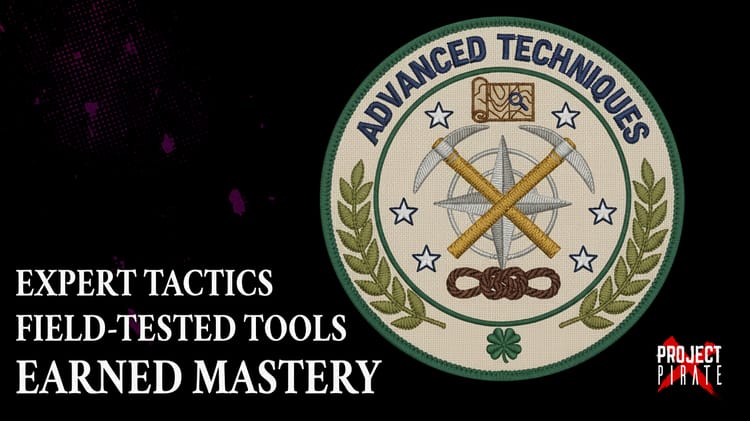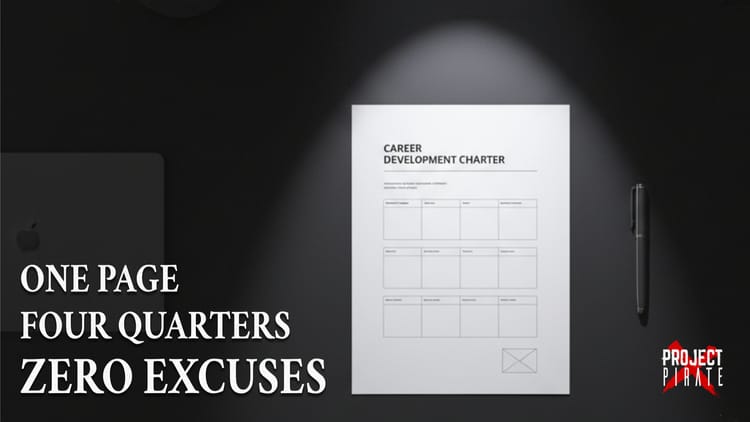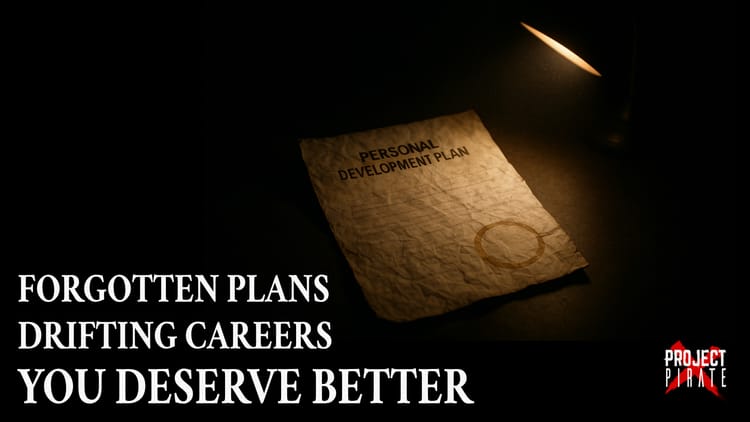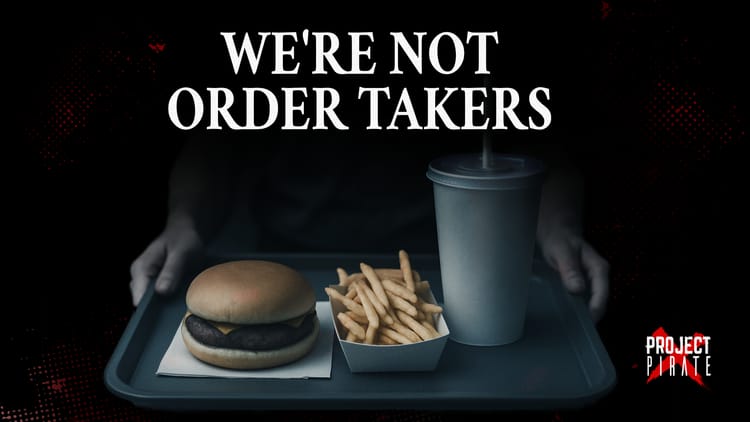The Unspoken Career Game: Hidden Levels, Side Missions & Why Some People Advance Faster
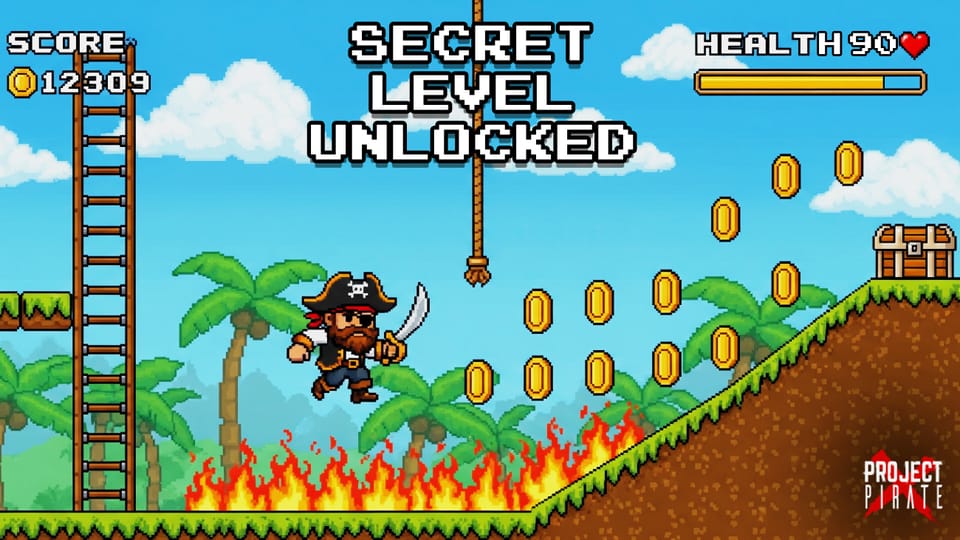
Remember finding that hidden level in Mario that made you feel like you'd discovered a secret? The one accessed through a precise sequence of jumps, or by finding that invisible block in just the right spot? Your career has hidden levels too - but most people never learn the button combinations to unlock them.
We've all watched it happen: the colleague who seemed to come out of nowhere and suddenly got promoted to Programme Manager while you're still waiting for your "turn."
What did they discover that you didn't?
The Standard Game vs. The Hidden Game
Most of us are taught the standard career progression game:
- Master your current role.
- Get good performance reviews.
- Apply for the next level up when it opens.
- Repeat until you reach your goal.
It's logical. It's fair. It's what we tell junior team members to focus on.
But it's also incomplete.
While you're following the main quest line, others are discovering secret passages, hidden levels and power-ups that accelerate their journey. Career advancement has hidden mechanics that most people never learn about.
Two Different Games: Experience vs. Trajectory
Here's where it gets interesting. Career advancement actually operates on two different systems:
Experience-Based Advancement: The traditional path where you prove you can handle the next level by demonstrating similar capabilities. Senior PM roles usually work this way - you need to show you can manage larger projects, more complex stakeholders, bigger teams. The logic is straightforward: evidence of capability predicts future performance.
Trajectory-Based Advancement: This is where people appear to "come out of nowhere." Senior leaders aren't asking "Have you done this job before?" but rather "Does your growth pattern indicate you're ready for this challenge now?" They're betting on your developmental curve, not your current skill set.
Understanding which game you're playing changes everything about your strategy; see how your professional presence is crucial & influences these perceptions: "Crafting Your Professional Presence: How the "Cut of Your Jib" Influences Career Success"
The Pull-Up Phenomenon: When Leaders Bet on Your Trajectory
The biggest game-changer is being "pulled up"... when a senior leader creates opportunities for you based on where they see you heading, not just where you currently are.
I learned this from a Senior Director, who explained how she scouts for people whose development trajectory indicates readiness for bigger challenges. Not people with perfect experience matches, but people whose growth pattern suggests they'll rise to meet new demands.
Here's what creates a "trajectory worth betting on":
Performance That Escalates: Not just consistency, but demonstrable growth in problem-solving complexity.
Scope That Expands: Taking on broader challenges without being asked. Your project delivery skills applied to organisational problems. Your stakeholder management extended to external partners.
Impact That Multiplies: Moving from individual contributor to team enabler. Building processes others can follow that transform results across multiple teams or business units.
Judgement That Deepens: Decision-making that improves under pressure and complexity. Leaders watch how you handle ambiguous situations where there's no playbook. This includes grasping new breakthroughs in technology or strategy and applying them better than your peers.
Influence That Grows: Your ability to drive results without formal authority. When people start coming to you for advice, seeking your opinion, or deferring to your expertise.
The key insight: you can't optimise for being pulled up, but you can consciously develop a trajectory that makes it more likely to happen.
🚨 RISK WARNING: I have seen individuals who play the card that they will up their game when a promotion becomes available - they tell themselves that they're ready and will demonstrate it once a new title is bestowed upon them... this is the wrong strategy! We could debate this at length, but typically it is the person who has demonstrated ability and character beyond their current role who makes the next jump... not those lingering with hidden talents they're not willing to show until someone pays them extra for it!
The Character Build Choice
Before any of this matters, you face a fundamental choice about where to invest your development points:
Technical Specialist Path: Deep domain expertise, advanced certifications, becoming the go-to person for complex technical challenges.
Leadership Generalist Path: People skills, strategic thinking, cross-functional collaboration, understanding business context beyond project execution.
Both paths can lead to senior roles, but require different advancement strategies. The trap: most people make this choice unconsciously rather than aligning it with their career goals.
The Side Mission Strategy
Some of the best career opportunities exist in what appear to be "optional" activities.
Cross-Functional Problem Solving: Volunteering to tackle challenges outside your job description. The process that's broken across three departments. The stakeholder conflict that's blocking multiple projects. The initiative that nobody wants to own.
Knowledge Sharing: Internal presentations, mentoring, documentation that makes others more effective. People remember who made their job easier and took time to develop others.
Strategic Relationship Building: Connections built through solving shared problems, not networking events. The relationships that create unexpected collaboration opportunities.
These side missions compound over time. Each one builds reputation, develops capabilities and creates relationships that become valuable in ways you can't predict.
Why Some People Accelerate Past Their Peers
Now it makes sense. The colleague who got accelerated promotion wasn't lucky... they were building a trajectory that demonstrated readiness for challenges beyond their current role.
Strong Trajectory Indicators: They were solving problems beyond their job description, expanding their scope of influence and showing judgment that improved with complexity. When opportunity arose, leadership could see they were already growing into bigger challenges.
Weak Trajectory Signals: Sometimes advancement happens for reasons unrelated to capability... timing, politics or organisational gaps. This creates advancement that looks impressive but often struggles when real challenges hit.
The difference becomes clear under pressure. People pulled up based on trajectory usually thrive in expanded roles. People promoted for other reasons often plateau or struggle when complexity increases.
Reading the Signals: When Hidden Levels Are Available
Experienced players develop sensitivity to when hidden advancement opportunities might be emerging:
Organisational Changes: Restructures, new initiatives, leadership transitions create gaps where non-traditional advancement becomes possible. Typically in large enterprise organisations, there's a pattern to restructure - study the pattern, be prepared and position yourself where new opportunities will emerge.
Crisis Situations: Problems that exceed standard procedures create opportunities for people who can navigate uncertainty and deliver results under pressure.
Strategic Pivots: When organisations change direction, they often need people with different skill combinations than their traditional hierarchy provides.
Growth Phases: Rapid expansion creates roles that didn't exist before, often filled by people who demonstrate readiness rather than traditional qualifications. This can happen when technology trends develop i.e. 10 years ago you wouldn't find 'Head of Cloud Platforms' or 3 years ago 'Chief AI Scientist' roles.
The Unbalanced Build Trap
The most dangerous mistake is what gamers call "button mashing"... repeatedly hitting the same approach hoping something will work.
The "Visibility Without Substance" Player: Focus entirely on being seen without building underlying capability. They generate initial attention but get exposed quickly when given real responsibility. We've all encountered these "all profile, no performance" colleagues.
The "Head Down, Work Hard" Player: Incredible technical capabilities with zero organisational presence. They consistently deliver excellent work but remain invisible to decision-makers. Like completing levels perfectly in single-player mode—nobody witnesses the achievement (see examples of increasing visibility in "Signal Flags: The Art of Pirate PR")
The "Credential Collector" Player: Accumulating certifications and training without connecting them to organisational value. They look impressive on paper but struggle to translate knowledge into results... makes me think of those individuals who have a series of certificate icons on their signature, it's not really impressing anyone.
The insight: all five elements need to develop in proportion. Substance without visibility is invisible to decision-makers. Visibility without substance gets exposed under pressure. Recognition without track record feels hollow.
The Project Pirate Approach
This analysis reveals why the Project Pirate philosophy works in practice: "Loyal to No Fleet, United by the Storm." We're not bound by traditional career hierarchies or advancement timelines. Instead, we build capabilities and relationships that create options when opportunities arise.
When storms hit organisations and they always do; leaders remember who stepped up, who kept teams together, who found solutions when conventional approaches failed. These moments become the stories that travel upward, creating pull-up opportunities.
The strongest careers aren't built by following prescribed paths, but by developing judgment about when to focus on the main quest and when to explore side missions that build unexpected capabilities.
Hidden Paths & Secret Levels in Action - A Personal Reflection
I have a few examples of this working in practice, but here are two that stand out:
The Pull-Up Experience: Eighteen months after I left a former boss's department to take up a new internal opportunity, he approached me about a promotion to Head of Department role in his new organisation. I hadn't applied. I hadn't lobbied. He had seen my work and ability to network and deliver across organisational and business unit boundaries. He and his new boss needed someone who could do this, so he lobbied for me to become his peer.
The Side Mission: In another company, I was asked to lead on a new concept focused on reshaping the Companies strategic direction. It was complicated - most people couldn't wrap their head around how to move from strategy to execution... what and how would we deliver this capability? This was on top of my current responsibilities. Nine months later, my boss had "resized" my role to include responsibilities for planning and delivery of this capability which hadn't existed before resulting in a promotion to a senior management grade. No interview process, no formal application - just organic expansion based on demonstrated capability and the relationships I'd built while solving real organisational problems with senior stakeholders.
Both examples validate the same truth: when you consciously build trajectory through side missions and expanded scope, opportunities find you rather than the other way around.
Your Hidden Levels Await
The question isn't whether hidden advancement opportunities exist in your career- they definitely do. The question is whether you're conscious about positioning yourself where they become more likely to happen.
Everyone talks about networking and skill development, but few professionals understand the systematic approach that turns capability into opportunity. Like gaming advancement really does have hidden mechanics that most people never discover.
Unlike video games, there's no published walkthrough or FAQs for career advancement. You have to experiment, observe what works in your specific environment and consciously develop the combination of capabilities and relationships that unlock opportunities others never see.
The professionals who understand this don't just advance faster - they build careers with more interesting challenges, greater resilience and significantly more choices when market conditions change.
Your career has hidden levels waiting to be discovered. The secret passages exist. The pull-up opportunities are real.
The only question is: are you ready to stop following the standard progression guide and start experimenting with what happens when you consciously develop the capabilities that make leaders want to invest in your advancement?
🕹️ ...and remember, like any game, it's played to be enjoyed… so have fun, make memories, build a network and keep looking to the horizon (there be treasure!)
Join the Crew - Where conventional career advice gets challenged and advancement strategies are discovered through strategic experimentation.

